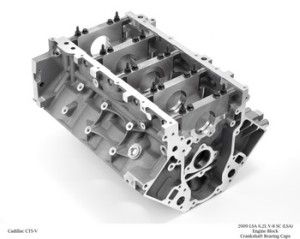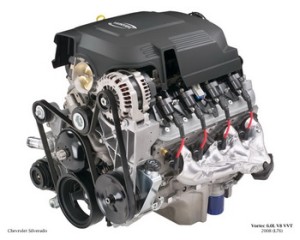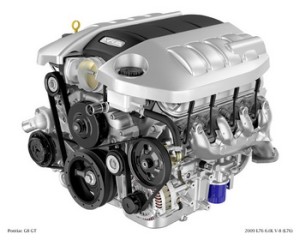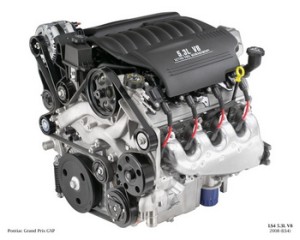 |
The LS Primer - Part 1 By Bill "BillaVista" Ansell |
IntroductionThe purpose of this article is to introduce you to the third and fourth generation GM V8 engines – the so-called “LS motors”. I’m calling it a “primer” because the topic is so vast that it would take several hundred pages to cover every single aspect of these motors. Instead of drowning you in trivia, I’m going to concentrate on the basic and most important information. Of course, it’s still a BillaVista article, so there’s going to be plenty of technical detail. This year I will be publishing quite a few more “LS Motor” based tech articles to compliment this one, including a detailed look at a custom Turn Key Engine Supply LS2, an article covering the installation of that motor in a buggy, and separate tech articles on cooling, oiling, and fuelling these beasts. |
 Turn Key Engine Supply 510 LS2 - photo: Lonny Handwork |
|||||||||||||||||||||||||||||||||||||||||||||||||||||||||||||||||||||||||||||||||||||||||||||||||||||||||||||||||||||||||||||||||||||||||||||||||||||||||||||||||||||||||||||||||||||||||||||||||||||||||||||||||||||||||||||||||||||||||||||||||||||||||||||||||||||||||||||||||||||||||||||||||||||||||||||||||||||||||||||||||||||||||||||||||||||||||||||||||||||||||||||||||||||||||||||||||||||||||||||||||||||||||||||||||||||||||||||||||||||||||
This first article will actually be comprised of two different parts, as follows:
RPO’s and GenerationsIt’s a little ironic that I, as uptight as I am about the accurate naming of things, should actually use a misnomer in the title of this article. Let me explain. GM uses a 3-digit code, called an RPO (an acronym for Regular Production Option), to identify the options with which a specific vehicle is built. They are listed on a label or sticker called the Service Parts Identification (SPID) label. On late-model GM cars and trucks this label is found inside the glove box. One of the most famous RPO's of all time is “Z28”. Z28 is the GM code, or RPO, that designates an optional performance package available on Chevy Camaros. This code has become so well known, and so often used, that it has actually come to be used to describe the car itself, as in, “Yea, I drive a Z28”. So what is the proper way to refer to the latest GM engines? To answer that, we’ll take a brief step back in time and look at the GM V8’s generation by generation, leading up to a brief look at the development history of the latest Gen III and Gen IV motors – the so-called “LS Motors” <-cringe! ;-) Gen I
So what happened?
What now? Then, in 1991 GM realized they were at a watershed moment in powertrain development. The results of, and response to, the Gen II LT1/LT4 motors had been underwhelming. At the same time, so the story goes, the tooling at the GM engine factories was at the end of its useful life – making it the perfect time for a redesign of the V8 family. In addition, GM were facing the same pressures as all other engine manufactures of the time – customer needs and regulatory changes were demanding newer engines with:
In other words, the time was ripe for a complete redesign of the venerable small block V8. From the start, GM knew that such a redesign would have to be broadly applicable to a wide range of products from trucks to SUV’s to luxury and high performance cars. To DOHC or not to DOHC? Another notable feature of the time was the move to double overhead cam (DOHC) engine architecture that was sweeping the automakers of the day. DOHC allows the elimination of pushrods, lifters, and rocker arms as well as removing the cam from the block. However, it is a generally expensive and complicated way to build an engine. It also generally results in a top-heavy and top-wide engine. On the other hand, at least in the early 1990’s, it was considered the “hi-tech” way to build a motor and some in the industry at that time considered pushrod architecture to be old-fashioned and antiquated. So GM had a decision to make – move to DOHC architecture or design a new pushrod V8. As the story goes, sometime in 1992 GM executives conducted a blind comparison test by driving otherwise identically equipped Corvettes – one with the “low tech” LT4 pushrod V8, and the other with the Corvette ZR1-spec Lotus-designed, all-aluminum 32-valve DOHC LT5 engine. Apparently the pushrod V8 LT4 ruled the day and the future of GM V8 development was decided – Gen III was to be a brand-new pushrod V8 design. Although I have no real basis for this claim, I have personally long suspected that perhaps a little stubborn pride crept into the decision as well. After all – most of the European and Japanese manufacturers had already gone DOHC and many scorned GM’s antiquated pushrod technology. I wouldn’t be surprised to learn that GM set out to prove the rest of the world wrong and show they could produce a class-leading V8 engine based on “old” pushrod technology…in any case, that’s just what they did!
Gen III
The bellhousing pattern is an extremely cool feature of the Gen III (and IV) motors for those of us swapping them into older or custom rigs. It means that you can sling virtually any GM standard or manual transmission behind a new Gen III/IV motor – from SM465 gear grinder to the legendary TH400 auto to the latest and greatest GM 6-speed manuals and electronically controlled automatics. The only catch is that only five of the six bellhousing bosses on the motor are drilled and tapped. Drilling and tapping the sixth, located on the passenger side, would cause you to cut into the number 8 cylinder water jacket. However, five have proven enough for virtually any setup.
The first Gen III V8 released was the all-aluminum 5.7L LS1 powering the 1997 Corvette. Gen III motor production included 4.8, 5.3. 5.7, and 6.0L car and truck versions, with iron or aluminum blocks. Gen III motors were discontinued in cars in 2005, to be replaced by Gen IV, but their use in trucks continued until 2007. The most common Gen III motors include the:
And then came the Gen IV. Gen IV
Gen IV refinement of the Gen III platform also included greater power production through increased displacement (generally larger bore but same stroke as the Gen III), higher compression, higher flow cylinder head improvements, flat top pistons, floating wrist pins, larger intakes, larger throttle bodies, larger exhaust, more aggressive camshafts and increased max RPM enabled by stronger and lighter valve trains. Other fine-tuning improvements to the Gen IV motors include reduced internal friction through things like piston rings with less spring tension. In order to accommodate the new technologies like AFM, the Gen IV motors have several subtle differences from the Gen III’s.
Details of the Gen IV advanced technologies like AFM and VVT will be described shortly.
LSX, LSx, LS(X)?As previously mentioned, the industry has tended to use the designation “LS” to refer to any Gen III or Gen IV motor. From this grew the tendency to use the term LSX where X was intended to be a “variable” (like in algebra) to mean any number. Thus, the term LSX could refer to any motor who’s RPO started with the letters LS. In other words: LS1, LS2, LS3, LS4, LS6, LS7, or LS9 could all be referred to as being an “LSX”. Alternatively, the whole group could be collectively referred to as the “LSX motors”. The only problem with this method is that there is an actual engine, or more accurately an engine block, whose actual real name is “LSX”. Introduced in 2006, the LSX is a special cast-iron racing block based on the aluminum Gen IV LS7 engine block. Designed in conjunction with NHRA legend Warren “The Professor” Johnson, it offers displacements ranging from 364 cubic inches to 511 cubic inches. Capable of withstanding up to 2500 bhp, it is available from GM Performance Parts and has the following specs: So, there is some possible confusion if one refers to the “family of Gen III and IV V8 motors having RPO codes starting with LS” as “LSX”. In order to avoid confusion, possible alternatives might be to place the X in brackets when referring to the Gen III/IV motors, as in: LS(x), or to simply use the term “LS motors”. There, I feel better just for having pointed that out. VortecJust to add to the confusion – something GM is almost as good at as building engines – we also have to deal with the name “Vortec”. Vortec is a trademarked name that GM uses in its line of truck engines. There are no Vortec car engines and never have been. The name has been used by GM to describe truck motors since Gen I, and continues to be used to this day. The name first appeared in 1986 on a 4.3L V6. Vortec engines are named for their approximate displacement (in cubic centimetres for Gen I Vortecs and in litres for the Gen III/IV engines). For example, the Vortec 5700 (RPO L31) is a Gen I 5.7L V8 truck engine. The Vortec 5700 also happens to be the last production Gen I small-block from Chevrolet, last produced for the 2000 model year C-K series pickups (it’s also the basis for the Ramjet 350 crate engine). A 2008 “Vortec 6.0L” could refer to either an iron block (RPO LY6) or an aluminum block (RPO L76) V8 truck motor.
In other words, there are Gen I Vortec truck motors, Gen III Vortec truck motors, and Gen IV Vortec truck motors. Obviously they are very different motors. The problem is, given people’s tendency to shorten or abbreviate things, many folks use the term “Vortec” in isolation, as in: “it’s a Vortec motor”, which doesn’t really mean much because it could be a Gen I, III, or IV. In reality, the word “Vortec” should be read as meaning only “GM truck engine”. More info is needed to narrow down what it is – it could be anything from a 1996 all-iron Gen I SBC, all the way up to the 2008 6.2L all-aluminum Gen IV L92 with variable valve timing technology.
As such, my recommendation is to always refer to any engine by its specific year and RPO (it’s an ’05 LS2) or at least its generation and displacement (it’s an ’06 Gen III 6.0 litre). In the latter case, if the listener knows a thing or two about the Gen III and IV motors they would know that their were three 6.0L V8’s in 2006, two iron-block Gen III truck motors (LQ4 and LQ9), the other an aluminum block Gen IV car and truck motor (LS2). Therefore, by saying Gen III 6.0L we would know it’s an iron-block truck motor (either the LQ4 or LQ9), because the aluminum LS2 is a Gen IV. But you can see this is already getting complex – which is why it would be better to always use the RPO, and say, for example, “it’s an ’06 LQ4”, and if the listener goes “huh?” then add, “Gen III iron block 6.0L truck motor”. Common Features of the Gen III / IV Design / ArchitectureIn this section, the following paragraphs detail the basic design elements of the first Gen III engine – the famous LS1. Where comparative descriptions are made, they are to be read as “in comparison to the earlier Gen I/II small block designs” which preceded the Gen III LS1. Because of the common architecture approach that was taken with Gen III/IV development, all later Gen III and IV engines that follow the LS1 will share these same design elements, except where specifically noted in the later sections on individual engines. To underscore this point (one of the greatest features of these engines), many of the pictures used in this section to illustrate these design elements and features are of much later engines like the 2009 LS9 – produced 12 years after the original LS1. Basically, this section describes the features and design elements common to the family of Gen III/IV small block V8’s, especially as they compare to the original small-block design. This is what makes a Gen III/IV motor a Gen III/IV motor: Block The LS1 engine block is designed to be more rigid, based on its overall shape, to help reduce the effects of combustion heat and energy which can bend and distort an engine block and generate noise and vibration. Typically, an engine block ends at the centreline of the crankshaft. The LS1 has a “deep skirt” that extends down past the main bearing caps. Two bolts were added that tie the bearing caps directly into the engine block from the side, for greater durability as well as reduced noise and vibration. The 6 main-bearing cap bolts are 4 x 10mm bolts vertically, and two 8mm bolts horizontally, or “cross-bolted”. Early LS1 blocks have machined holes through the main webs in the block between the cylinder bores for crankcase bay-to-bay breathing. LS6 and all later blocks have cast-in ports for bay-to-bay breathing. These windows or ports are very important for allowing the oil vapour to move around in the bottom end at high RPM without creating excessive back-pressure against the pistons during their down-travel strokes.
Crank & Pistons Gen III/IV engines have “cracked” connecting rods. They are called “cracked” because, after the rod is created, a groove is machined into the ID of the big end, and then a side-load is applied until the big end cracks into two pieces – the rod and the cap. Because of this process, the two halves have jagged micro edges that mate perfectly and lock tightly together. Thanks to uniform cylinder bores that result from the new 4-bolt head design (see below), LS1 pistons are able to use piston rings with less tension than previous designs, reducing friction and improving fuel economy. LS1 pistons and rods are lightweight, enabling higher engine RPM.
Cylinder Heads
Intake Manifold
Valvetrain
A roller timing chain with nylon tensioners improve engine sound quality.
Accessory Drive The design also lends itself well to custom mixing and matching of components to suit specific needs.
Oil System The LS1 incorporates a high-efficiency Gerotor oil pump, driven off the front of the crankshaft, eliminating the old cam-driven design.
Ignition System
Fuel Injection Oiling Oil pan – pickup tube – crank driven gerotor pump – main oil galley (driver’s side of block) – oil filter – up rear driver’s side of block – main feed galley (runs through the lifter bodies) – up to top of engine through pushrod passages – drains back to pan through drain-back passages throughout the heads and block – oil pan. Cooling Specs
* Except certain 4.4L and 4.6L “Northstar” Cadillac engines and the 4.8L LS4 that were transverse motors (engine sits in chassis sideways, with crank orientation side-to-side) for use in front-wheel-derive (FWD) cars. # Except certain 4.4L and 4.6L “Northstar” Cadillac engines that were DOHC. Gen III / IV Benefits Over Gen I/II There are dozens of Gen III and IV GM V8 engines to choose from – but what makes them all so special, so much more attractive than a well-built version of a Gen I or II motor?
Gen IV advanced technologies - AFM and VVTActive Fuel Management AFM automatically shuts down every second cylinder, according to firing order, during light-load operation. In engineering terms, this allows the working cylinders to achieve better thermal, volumetric and mechanical efficiency by reducing heat loss, combustion loss and friction, and lowering cyclical combustion variation from cylinder to cylinder. AFM is designed to deliver better fuel economy and lower operating costs. Active Fuel Management relies on three primary components: De-Ac (for deactivation), or collapsible, valve lifters, a Lifter Oil Manifold Assembly (LOMA), and the ECM. When loads are light, the E38 ECM automatically closes both intake and exhaust valves for half of the cylinders and cuts fuel delivery to those four. The valves re-open to activate all cylinders when the driver demands brisk acceleration or full torque to move a load. The engine’s electronic throttle control (ETC) is used to balance torque following cylinder deactivation or reactivation. The transition takes less than 20 milliseconds, and can’t be detected by the driver. In the L76 Gen IV V8, the De-Ac lifters are installed in cylinders 1, 4, 6 and 7, while the remaining cylinders use conventional lifters. The hydraulically operated De-Ac lifters have a spring-loaded locking pin actuated by oil pressure. For deactivation, hydraulic pressure dislodges the locking pin, collapsing the top portion of the lifter into the bottom and removing contact with the pushrod. The bottom of each De-Ac lifter rides up and down on the cam lobe but the top does not move the push rod. The valves do not operate and combustion in that cylinder stops. During reactivation, the oil pressure is removed, and the lifter locks at full length. The pushrods, and therefore the valves, operate normally. The final AFM component is the LOMA. This cast-aluminum assembly is installed in the valley of the engine in place of a conventional engine block cover. The LOMA holds four solenoids, control wiring and cast-in oil passages. The solenoids are managed by the ECM, and each one controls oil flow to a De-Ac Lifter, activating and de-activating the valves at one cylinder as required for Active Fuel Management. Variable Valve Timing The cam-phasing system in the Vortec 6.2L is similar in concept to that introduced in GM’s 3.9L and 3.5L V6 car engines for 2006. The 6.2L’s dual-equal cam phaser adjusts camshaft timing at the same rate for both intake and exhaust valves. A vane-type phaser is installed on the cam sprocket to turn the camshaft relative to the sprocket, thereby adjusting the timing of valve operation. The vain phaser is actuated by hydraulic pressure from engine oil, and managed by a solenoid that controls oil pressure on the phaser. The phaser uses a wheel or rotor with four vanes (like a propeller) to turn the camshaft relative to the cam sprocket, which turns at a fixed rate via chain from the crankshaft. The solenoid directs oil to pressure points on either side of the four phaser vanes; the vanes, and camshaft, turn in the direction of the oil flow. The more pressure, the more the phaser and camshaft turn. The Gen IV Vortec 6.2L’s new E38 engine control module directs the phaser to advance or retard cam timing, depending on driving demands. The dual-equal phaser can turn the camshaft over a range of 31 degrees relative to the cam sprocket (or 17 degrees advance, 45 degrees retard relative to the crank). The benefits are considerable. The cam phaser changes valve timing on the fly, maximizing engine performance for given demands and conditions. At idle, for example, the cam is at the full advanced position. This allows exceptionally smooth idling. Under other operating demands, the phaser adjusts to deliver optimal valve timing for performance, driveability and fuel economy. At high rpm it might retard timing to maximize airflow through the engine and increase horsepower. At low rpm it can advance timing to increase torque. Under a light load (say, casual everyday driving), it can retard timing at all engine speeds to improve fuel economy. Without cam phasing, a cam design must be biased toward one strength or another—high-end horsepower or low-end torque, for example—or profiled at some compromise level that maximizes neither. Variable valve timing allows linear delivery of torque, with near-peak levels over a broad rpm range, and high specific output (horsepower per litre of displacement) without sacrificing overall engine response, or driveability. It also provides another effective tool for controlling exhaust emissions. Because it manages valve overlap at optimum levels, it eliminates the need for an Exhaust Gas Recirculation (EGR) system. The Car Motors.All Gen III and IV V8’s having RPO’s starting with “LS” are all-aluminum car motors except that the LS2 was also used in Chevy SSR sport trucks and and Chevy Trailblazer SS / Saab 9-7X Aero sport utilities. The LS motors were most often used in the Chevrolet Corvette, but also see use in other premium performance cars such as the “F-body” Camaro and Firebird, Pontiac GTO, and Cadillac CTS-V. On the flip side, all cars using Gen III/IV motors use “LS” motors, except the 2008-09 Pontiac G8 GT which uses the all-aluminum L76 6.0L (also used in 2007+ trucks) and the 2009+ Cadillac CTS-V which uses the brand new supercharged all-aluminum 6.2L LSA designed specifically for that car. Nothing’s ever easy! Car Motors At a Glance
Car Motors in DetailLS1Generation: III
Notable Features: Launched in the 1997 C5 Corvette, the 5.7L LS1 moved cam-in-block overhead-valve V8 engine design into a new era, as described above. LS1 air conditioning compressor is mounted on the lower right side of the engine and uses a separate drive belt for efficient packaging and noise reduction (7 db). Changes to the 2000 LS1 include:
Changes to the 2001 LS1 include
In 2001, GM - for the first time since 1955 - changed the crank depth and its pilot bore diameter of the Gen. III. Pilot bushings differ for these motors and transmissions built from this time forward had a deeper bellhousing and different torque converter. Camaro / Firebird LS1’s have an F-body specific oil pan and accessory drive package. GTO LS1s camshaft is the same as the Corvette LS1 cam. The GTO, Camaro, and Firebird LS1s uses a mechanical throttle body rather than the Corvette’s electronic throttle control (ETC). The GTO LS1 requires a unique oil pan with a front sump to clear the GTO’s steering rack. The oil filter moves with it. Baffles and channels in the oil pan have been redesigned to match the GTO’s oil filter location. The GTO LS1 has application-specific engine mounts, and its accessory drive belt routing is different than the Corvette’s. Because the GTO uses a different power steering pump and different mounting brackets, the drive belt path was adjusted to accommodate these changes. Applications & Power: 1997-2000 Chevrolet Corvette C5 - 345 hp / 350 ft-lbs LS6Generation: III
Notable Features: The 5.7-liter LS6 builds on the inherent strengths of the Corvette's LS1 engine, but benefits from a higher-lift camshaft and higher-compression pistons to raise HP from 350 to 405, and torque from 340 lb-ft. to 400 lb-ft. Power is produced through the use of hollow-stem valves, a more aggressive camshaft, improved intake and higher-rate valvesprings. Maximum engine speed rises from 6200 to 6600 rpm. Transforming the LS1 into the LS6 involved dozens of enhancements to increase volumetric efficiency and maximum rpm, starting with an all-new engine block. The aluminum block casting on the LS6 deletes machined holes in the LS1 bulkhead and adds cast in "windows" which allow better bay-to-bay breathing. On the downstroke, the pistons push air back toward the crankcase, creating backpressure or resistance, and that translates into parasitic horsepower loss because it resists piston motion. With the overtravel windows air is allowed to move more freely between crankcase bays thus relieving the unwanted pressure. The LS6 composite intake manifold is revised and combined with a higher flow MAF-sensor to increase airflow to the cylinder head intake ports. The LS6 crankshaft features a light-alloy torsional dampener, which balances shaft twist and flex to reduce vibration. LS6 pistons are cast from high-strength M142 aluminum alloy and reshaped with a slightly different profile than those in the LS1. In side view, the LS6 pistons have a slight barrel shape, almost imperceptible to the naked eye. The new alloy increases engine durability at racetrack operating levels, while the shape reduces internal mechanical noise. The LS6's aluminum cylinder heads are cast with smaller pent-roof combustion chambers than the LS1. Compression ratio increases from 10.1:1 to 10.5:1, improving thermal efficiency and increasing horsepower. Intake and exhaust ports in the LS6 head are refined and more-precisely cast, contributing to the engine's overall increase in volumetric efficiency. The LS6-specific, steel-billet camshaft with higher lift and more duration contributes to the LS6's horsepower gain more than any other single piece of hardware. In simple terms, the cam opens the valves quicker and allows more air to flow into the combustion chambers. Cam lift increases from the LS1's 12.7 to 13.3 mm. The LS6's application on the Corvette Z06 creates additional demands on the crankcase ventilation system. The Z06 is capable of cornering at more than 1 lateral "g" requiring a special high-performance ventilation system. To prepare the Z06 for full-on driving, the LS6's PCV system is moved into the engine's V, or valley. The unique aluminum valley cover has composite oil-separating baffles and PCV plumbing incorporated. All of this reduces oil consumption during high-performance driving - and as an added benefit also reduces the amount of external plumbing, eliminating potential oil leak sources. Applications & Power: 2001 Chevrolet Corvette C5 Z06 – 385 hp / 385 ft-lbs LS2Generation: IV
Notable Features:
The all-new 319-T5 aluminum deep-skirt LS2 block with cast-in-place iron cylinder bore liners and cross-bolted main caps remains precision sand cast, but is strengthened with controlled cooling during the casting process. The new LS2 heads applied flow characteristics developed in the Corvette C5R racing program. The shape of the combustion chambers was optimized; with new flat-top pistons, the compression ratio increased to 10.9:1 (compared to 10.1:1 in the LS1). The maximum speed of the engine was increased with stronger valve springs, rising from a redline of 6000 rpm in the LS1 to 6500 rpm in the LS2 A higher-lift camshaft developed to take advantage of the free-flowing cylinder heads was introduced, and the electronic throttle body was enlarged from 75 mm to 90 mm. It is mounted to a new multi-piece welded composite intake manifold tuned to improve airflow. To improve durability in the bottom end, the LS2 features polymer-coated pistons with floating wrist pins. To reduce friction as the pistons mover through the cylinder bore, piston ring spring tension was reduced. LS2 displacement was increased over the LS1 through enlarging the bore from 99 to 101.6 mm, and stroke remains the same 92 mm as the LS1. Power output is measured with premium fuel; however its advanced control system and efficient combustion chamber design allow the LS2 to operate safely on pump fuel as low as 87 octane. Because it is a Gen IV design, even though it doesn’t feature AFM or VVT, it still features the subtle Gen IV changes explained earlier that accommodate these technologies, like the relocated knock sensors, cam position sensor, and the crankcase vent moved to the top of the valley. 2006 LS2 Improvements New engine control module Advanced direct ignition system & improved target ring for camshaft position sensing 2007 LS2 Updates Improved Timing Chain Dampener Oil Filter with Internal Bypass Applications & Power: 2005-2007 Chevrolet Corvette - 400 hp / 400 ft-lbs LS7Generation: IV
Notable Features: Introduced a year after the 6.0L LS2 as a replacement for the 5.7L LS6, the 7.0L LS7 block has a larger bore and longer stroke than the LS2. The crankshaft and main bearing caps are forged steel for durability, the connecting rods are forged titanium, and the pistons are hypereutectic. The two-valve arrangement is retained, though the titanium intake valves by Del West have grown to 2.20 in (55.9 mm) and sodium-filled exhaust valves are up to 1.61 in (40.9 mm). The LS7 is hand-built by the General Motors Performance Build Centre in Wixom, Michigan for the Corvette Z06, and to be sold as a GM Performance Parts crate engine. LS7 features:
To increase the displacement, both the bore and stroke are enlarged over the 6.0L LS2. The 7.0L V8 bore is now 4.125 in (104.9 mm), versus the 101.6 mm of the LS2, and the stroke is now 4.00 in (101.6 mm), versus the 92.0 mm of the LS2. Larger pressed-in cylinder sleeves, versus cast-in for the LS2, required reshaping the block to fit inside. The block features machined bay-to-bay ports between cylinders to improve bay-to-bay breathing and reduce pumping losses. The crankshaft is forged steel with a longer stroke than the LS2. To reduce weight while increasing strength, the connecting rods are titanium, and are about 27 percent lighter than forged powdered-metal rods used in the LS2. The lighter rods reduce the pressure on the rod end bearings and the main bearings, and allow the bearings to be optimally sized for the least amount of friction. Six-bolt doweled-in-place forged steel main bearing caps hold the balanced crankshaft in place. To reduce weight, tapered piston wrist pins are used. The piston rings are anodized to reduce blow-by and friction. The piston skirts are coated with a polymer to reduce engine noise. The weight trimming, friction-reducing features in the LS7’s bottom end lower reciprocating mass and contribute to its 500-rprm maximum speed increase over the LS2 - redline is increased to 7000 on the LS7. Fuel shutoff is at 7100 rpm. This engine speed is also significant for an engine with overhead valves, a single cam, and two valves per cylinder. A new low-restriction intake system is used, with approximately 20 percent less restriction than the intake in the LS2. A new drop-in mass airflow sensor minimizes flow restriction. The intake manifold is a new 3-piece friction welded port-matched composite unit. The large straight intake runners are designed to maintain fast airflow velocity, while air volume increases 18 percent over the LS2. All new cylinder heads with fully CNC-ported intake and exhaust ports and combustion chambers reduce flow restrictions. High machining consistency aids airflow and allows a higher compression ratio. Valve angles are moved to 12 degrees as compared to the LS2 angle of 15 degrees. The rocker arm ratio increases from 1.7:1 in the LS2 to a 1.8:1 ratio. Valves are larger and taller with titanium intake valves and hollow stem, sodium-filled exhaust valves to optimize heat transfer away from the valve face. Siamesed valve seats are designed similar to those used in the C5R race cars. The camshaft profile is revised to take advantage of the higher flowing cylinder heads and intake manifold. The new profile provides higher lift than the camshaft in the LS2. The valves also operate at the highest lift of any engine produced by GM. Hydraulic roller lifters with a larger lift ratio actuate the valves. To improve oil control during high-rpm driving and high lateral acceleration loads, a dual gerotor oil pump is added. The first stage of the pump scavenges the small sump under the engine and delivers it to an eight-quart reservoir. The second stage collects oil from the reservoir and sends it under pressure to the engine. The reservoir is mounted remotely in the engine compartment. The oil cools slightly in the reservoir, and then cools again in an air-to-oil cooler after it is collected by the second stage of the pump. The total oil capacity is 8.0 quarts, 2.5 quarts larger than the capacity of the LS2. At its introduction, the 7.0L LS7 V8 was the most powerful production small-block V8 ever; with the highest operating speed (rpm) ever; more torque than the high-performance V10 in Porsche’s Carrera GT or the V12 in Ferarri’s 575M Maranello. Applications & Power: 2006-2008 Chevrolet Corvette Z06 - 470 hp / 505 lb-ft LS7 Pics:
LS3Generation: IV
Notable Features: The LS3 was introduced in 2008 to replace the LS2 as the Corvette base engine. The 2008 6.2L LS3 V8 with 430 Hp @ 5900 rpm and 424 lb.ft. torque @ 4600 rpm is the most powerful Corvette base engine ever. LS3 Features:
The LS3 continues the Gen IV evolution by using multiple design elements to increase flow efficiency, in addition to a displacement increase, to meet the desired performance enhancement over LS2. The bore was increased to a larger 103.25 mm diameter compared to the LS2 bore of 101.6. Engine stroke remains at 92.0mm. Intake flow efficiency was optimized by straightening out and optimizing the flow path from the intake manifold into the cylinder heads. A high flow efficiency induction system is borrowed from the LS7. The cylinder head exhaust ports have been modified to increase flow. The intake port shape size and shape have been modified to increase flow. The higher flow intake ports are similar to the L92 6.2L. Casting changes were made to increase the opening at the exhaust face to improve exhaust port flow. A new exhaust manifold opening is required to match the heads. The inlet rocker arm is offset 6 mm between the valve tip and rocker bolt/push rod to enable a more direct intake port. The intake valve diameter is increased from 50.8 to 55.0 mm. Hollow stem intake valves were implemented to enable the 6600 rpm capability (13% reduction in mass from LS2). The 40.4 mm diameter exhaust valves are carried over from L92. Carryover LS2 high load valve springs are also included for 6600 rpm capability. Intake lift increases from 13.25mm to 14.0mm. Exhaust lobes are carryover LS2. Camshaft timing is revised. Intake ports are revised to match the new cylinder head. The new composite intake manifold is manufactured with a lost core process to improve runner to runner variation and to reduce flow losses. In order to reduce radiated engine noise acoustic foam is sandwiched between the outside top of the intake manifold and an additional “skull cap” acoustic shell. Structural enhancements have been added to the manifold bosses. The LS3 features an improved block with structural improvements. Casting and machining in the bulkheads was revised to improve block structure and to improve bay to bay breathing. The enhanced block is shared with the 6.2L L92 truck motors. LS3 uses a new larger diameter piston which includes design enhancements for the higher engine output. Higher flow 5.0 g/s injectors from the LS7 engine are used in the LS3. Applications & Power: 2008- Chevrolet Corvette - 430 hp / 424 lb-ft LS9Generation: IV
Notable Features: Simply put, the supercharged LS9 is the most powerful production engine ever offered by GM Powertrain--a company with a 100-year tradition of building very powerful engines. The LS9 generates 638 horsepower at 6500 rpm and 604 pound-feet of torque at 3800 rpm – yes 3800 RPM!!!! Its specific output of 103 horsepower per litre, or 1.70 horsepower per cubic inch, is remarkable for an engine of its displacement. According to published figures, the LS9-equipped ZR1 has more horsepower and torque than the Dodge Viper SRT10, Ferrari 599 GTB Fiorano, and Porsche 911 GT2 Lamborghini Murcielago LP640— all benchmarks among exotic international sports cars. The LS9 is a Gen IV 6.2 L supercharged V8 based on the LS3. The reason the LS3 block was used as the basis, and not the 7.0L LS7 block is the higher cylinder pressures created by the supercharger requiring the thicker cylinder walls of the LS3. Cylinder dimensions are now 4.06 in (103.25 mm) bore with a 3.62 in (92 mm) stroke. The LS9 is equipped with an Eaton four-lobe Roots-type 2.3 L/rev supercharger and integrated dual coolant-to-air intercooler. It also features piston oil-spray cooling and direct-mount ignition coils. LS9 Features:
The LS9 is fitted with Eaton’s twin-rotor R2300 supercharger—one of the company’s Twin Vortices Series (TVS), which displaces 2.3 litres per revolution, compared to more conventional superchargers of 1.5 litres or less. The R2300 in the LS9 generates a maximum boost pressure of 10.5 pounds per square inch (0.72 bar). A supercharger is essentially an air pump driven by the engine’s crankshaft. It forces more air into the engine’s combustion chambers than that engine could otherwise draw on its own. The increased volume of oxygen allows the engine to efficiently process more fuel, and thus generate more power. The TVS design is highly refined and efficient. Each of its two rotors has four distinct lobes, or spiral-shaped vanes that intermesh precisely with those on the other rotor as they spin at high speed. Efficiency gains with the four-lobe rotors are substantial, compared to comparably sized, previous-generation superchargers: approximately 20 percent more airflow, with an improvement in thermal efficiency up to 15 percent. Moreover, parasitic power loss—the amount of power the engine uses to operate the supercharger—is reduced 35 percent. That improves both supercharger response time and the engine’s overall efficiency. Integrated Dual-Brick Air-to-Liquid Intercooler Intercoolers are familiar features on supercharged and turbocharged engines. Similar in concept to an engine’s radiator, intercoolers cool the air pumped by the charging device into the cylinders. Cooler air is denser air, which means more oxygen in a given volume, resulting in optimal combustion and more power. Traditionally, intercoolers look like small radiators mounted somewhere outside the engine, with air fed into the engine through a plumbing network. The LS9’s intercooling system raises the bar in both packaging and efficiency. It uses two low-profile, aluminum tube-and-fin heat exchangers mounted longitudinally above the rotors in the supercharger case. Air pumped by the supercharger flows directly through these bricks to the intake ports on the cylinder heads. The bricks are cooled by their own coolant circuit, with a remote pump and 3.62-liter capacity heat exchanger mounted in front of the Corvette’s radiator. Bottom line: The temperature of air fed to the LS9’s cylinder heads is reduced 140 degrees F (60 degrees C), substantially increasing the amount of oxygen available for the combustion process because cooler air is denser air. The intercooler design also contributes to the supercharger’s quiet operation. The cooling bricks help dampen sound radiating from the supercharger case, while ribs cast into the top of the intercooler housing add strength and reduce vibration.
The original 6.2L Gen IV LS2 block has been further refined for the LS9. It’s cast from 319-T7 aluminum and the cylinder liners are cast in and machined with a deck plate installed over the cylinder bores. The deck plate simulates the pressure and tiny dimensional changes that occur when the cylinder heads are bolted to the block. The process enhances assembly quality and fit, ensuring precise head sealing, improved piston ring sealing and peak performance as the engine accumulates miles. Bulkheads in the LS9 engine block have been strengthened 20 percent by optimizing the size of the bulkhead “windows” to take advantage of material thickness in the bulkhead. This is additional improvement beyond a 20% gain obtained in the naturally aspirated 6.2L LS3 V-8 by increasing the radius of the hone over-travel fillets from three to 10 millimetres. The enlarged bulkhead windows also improve bay-to-bay breathing by managing airflow inside the engine more efficiently, thereby decreasing pumping loss (reducing resistance to the pistons’ downward movement). LS9’s six-bolt, cross-threaded main-bearing caps are forged steel, fully machined on all surfaces and dowel aligned for precise fit and minimal vibration.
LS9 pistons are forged aluminum for a high-performance combination of low mass, high strength and durability. These are considerably lighter than conventional aluminum pistons, which translates to less reciprocating mass inside the engine. Less mass means greater efficiency, high-rpm capability and a feeling of immediate response as the engine builds revs. The combustion surface of the LS9 pistons, or the crown, lacks the valve-relief pockets typical on high-performance engines with relatively high-lift valves. Rather, the LS9 crown is sumped, with a saucer-shaped indent that dips gradually from the outer edge of the piston. This design promotes a thorough mixing of air and fuel and, with other durability enhancing features such as an anodized top ring groove, allows a 9.1:1 compression ratio: higher than a conventional supercharged or turbocharged engine, for improved combustion efficiency. The anodized top ring groove reduces wear and accepts the heat generated during combustion between the top ring and its groove. To further reduce wear, the piston skirt is coated with a polymer material, which eliminates bore scuffing, or abrasion of the cylinder wall over time from the piston’s up-down motion. The polymer coating also dampens noise generated by the piston’s movement. The tapered wrist pins, which attach the piston to the connecting rod, were developed for maximum durability, and “float” inside the rod bushing and pin bores in the piston barrel. Compared to a conventional fixed pin assembly, in which the connecting rod is fixed to the piston’s wrist pin and the pin rotates in the pin bore, the floating pins reduce stress on the pin. They allow tighter pin to pin-bore tolerances and reduce noise generated as the piston moves through the cylinder. The benefit is less engine wear, improved durability and quieter operation.
Finally, the 6.2L LS9 represents the first line of small block V-8s equipped with oil-spray piston cooling. Eight oil-squirting jets in the engine block drench the underside of each piston and the surrounding cylinder wall with an extra layer of cooling, friction-reducing oil. The oil spray reduces piston temperature, promoting extreme output and long-term durability. The extra layer of oil on the cylinder walls and wristpin also dampens noise emanating from the pistons.
The LS9 uses a balanced, dropped-forged micro-alloy steel crankshaft with a nine-bolt flange to mount the flywheel. The nine-bolt pattern increases clamping strength compared to naturally aspirated 6.2L Gen IV V-8s, which use a six-bolt crank flange. A smaller-diameter ignition-timing reluctor wheel trims weight and ensures clearance to the pistons as they move in the bore. At the front end of the crank, the torsional damper is secured with a keyway and friction washer for an added element of security, given the LS9’s exceptional torque.
Titanium connecting rods mate the crank with the pistons, for the ultimate combination of strength and light weight. The titanium rods weigh roughly 25 percent less than conventional iron or steel. They reduce pressure on both the rod-end bearings and main bearings, and allow the bearings to be optimally sized for the least amount of friction. A refined camshaft is used in the LS9. The torque enhancing benefits of the supercharger allowed GM Powertrain engineers to develop a “softer,” lower-lift camshaft for the LS9, compared to the typical high-rev, high-power exotic car engine. The LS9 cam delivers maximum lift of 14.3 mm for the intake valves and 14.2 mm for the exhaust valves. Moreover, the cam lobes are profiled to reduce the amount of time that both intake and exhaust valves are partially open at the same time. Valve overlap is reduced 27 percent compared to the track-bred 7.0L LS7. The result is smoother operation at low speeds, and particularly at idle. Idle quality improves 11 percent compared to the LS7. The 6.2L Supercharged LS9 cylinder heads are similar to those used on the naturally-aspirated 6.2L LS3 with enhancements for supercharged induction and maximum durability. The LS9 heads feature a unique “wing’’ cast into each intake port to promote a swirling motion that blends the pressurized air-fuel charge. The heads are also cast from a premium A356T6 alloy, which better manages the heat generated in a supercharged engine. A356T6 pays particular dividends in the thin bridge area between the intake and exhaust valves, where effective heat dissipation is crucial to both performance and long-term durability. Finally, the LS9 heads are rotocast. This process rotates the head mould as the molten alloy cools and essentially eliminates porosity, or microscopic pockets of air trapped in the casting. Rotacasting delivers a stronger part that helps maintain performance and structural integrity over the life of the engine. Low-friction hydraulic roller lifters actuate the LS9’s valves, with unique offset rocker arms for the intake valves. On the inlet rocker, the valve tip is offset six millimetres from the pushrod. This configuration allowed Powertrain engineers to locate the intake port for a more direct air-fuel flow into the combustion chamber. Intake valves measure 55 mm in diameter and are fabricated from titanium—chosen for its combination of strength, light weight and high-rpm potential. Perhaps more crucial to durability are the exhaust valves, which are typically the hottest part in the engine. Those in the LS9 measure 44.0 mm in diameter, and they’re manufactured from a high-chromium steel alloy called SilChrome 1, with hollow, sodium-filled stems. At normal operating temperatures, the sodium inside the valve stem melts and becomes liquid. The liquid sodium improves conductivity, promoting heat transfer away from the valve face to the cooler end of the stem, where it more readily dissipates through the valve guide. This maintains a lower, more uniform valve temperature, reducing wear on the valve seat for a consistent seal between the valve and head over the life of the engine. Given the LS9’s pressurized induction, Powertrain engineers focused special attention on sealing. Head gaskets are extra-robust, four-layer stainless steel, and the 12 mm cylinder head bolts are hardened stainless. The 12 mm bolts increase head-gasket clamp strength (compared to 11 mm bolts on other small block engines), ensuring gasket sealing under the high combustion pressures generated by the LS9.
Centre-Feed Fuel System To ensure appropriate fuelling in all conditions, from casual cruising to race track-type wide-open throttle, GM has equipped the LS9 with a dual- pressure fuel system. The system delivers 250 kPa (about 36 psi) at idle or low speeds. Yet the electronic throttle management system can almost instantaneously increase fuel pressure to 600 kPa for sustained high-speed operation or wide-open throttle. The dual-pressure system reacts according to throttle application, and presents several advantages. It limits the energy used by the fuel pump at low speeds, for maximum efficiency, and it reduces operational noise. It also ensures adequate fuel delivery when the LS9 demands its maximum flow rate of 58 grams per second. The LS9 also employs a new centre-feed fuel rail that delivers gasoline to the centre of the injector rail on each bank. The delivery point is roughly equidistant to each of the injectors, which have a maximum flow rate of 6.52 grams per second at 400 kPa. Fuel pressure variation among the injectors is reduced, and so is noise. The rapid ticking sound often generated by fuel injectors is alleviated.
An 87-mm, single-bore throttle body draws air into the engine. The electronic throttle maps have been optimized for excellent response and modulation in a multitude of driving scenarios. The LS9’s coil-on-plug ignition features advanced coils developed for the 7.0L LS7. These coils are smaller and lighter than those used on previous small-block V8s. The coils mount directly on LS9-specific rocker covers. Those on the LS3 and LS7 are joined by a bracket. The individual LS9 coils provide a cleaner look and a shorter lead between the coil and the iridium-tip, centre-electrode spark plug. An advanced controller manages the multitude of operations that occur within the 6.2L Supercharged LS9 V-8 every split second. The E67 is the high-line controller in GM’s family of three engine control modules, which was developed to direct nearly all the engines in GM’s line-up. It features 32-bit processing, compared to conventional 16-bit processing, with 32 megabytes of flash memory, 128 kilobytes of RAM and a high-speed CAN bus. The E67 synchronizes more than 100 functions, from spark timing to cruise control operation to traction control calculations. The E67 also applies a new, rate-based monitoring protocol sometimes known as run-at-rate diagnostics. Rate-based diagnostics improve the robustness of the Onboard Diagnostics System (OBD II) and ensure optimal performance of emissions control systems. The software increases the frequency at which the ECM checks various systems, and particularly emissions-control systems such as the catalytic converter and oxygen sensors. The LS9 uses the LS7-introduced racing-style dry sump lubrication system and dual-gerotor oil pump. The LS9 version extends the system’s lubricating capability 33 percent. This is accomplished with a larger 10.5-quart reservoir capacity, increased with a 2.5-quart auxiliary tank attached to the main reservoir, and higher-flow, 32.5-gpm gerotor pump. The increased capacity dry sump system is also used on the 2009 LS7.
To tailor the 6.2L LS9 to the Corvette’s engine bay, the supercharger drive is integrated into the main accessory drive system. The LS9’s two-belt accessory drive has one belt turning the air conditioning compressor and alternator, and another operating power steering, the water pump and the supercharger. The supercharger requires the most force to turn, so its circuit uses a wider, 11-rib belt. To compensate, the LS9 water pump has improved bearing capacity. Bearing diameter is increased from 16 mm to 19 mm, compared to the LS7. To allow a common power steering pump with other small block V8’s, the LS9 pump is spline driven through a bracket and bearing system that takes the load off the supercharger. Applications & Power: 2009+ Chevrolet Corvette ZR1 LSAGeneration: IV
The LSA is the most powerful engine ever offered in Cadillac’s nearly 106-year history. Based on the LS9, the LSA is a slightly lower-tech version designed for the 2009+ Cadillac CTS-V. Design considerations focused more on reducing NVH than did LS9 design, befitting for the intended Cadillac application. Like the LS9 it’s a 6.2 L (6,162 cc/376.0 cu in) supercharged engine, but is equipped with a smaller 1.9L/rev Eaton four-lobe roots-type supercharger. It also has only a single integrated coolant-to-air intercooler compared to the LS9’s dual. The LSA also gives up a few of the 9’s internal goodies, using nodular iron mains instead of forged steel, forged powder metal connecting rods in place of forged titanium, and cast instead of forged pistons. The LSA crank mounts the balancer to an 8-bolt flange compared to the LS9’s 9-bolt. The block is the same design as the LS9 but is cast from 319-T5 aluminum as opposed to the LS9’s 319-T7. The LSA cam is a low lift, low overlap design but delivers maximum lift of 12.2 mm for both the intake and exhaust valves, slightly less than the LS9 cam. However, the LSA shares the LS9’s:
Because its intended application is the luxury-performance Cadillac CTS-V, as opposed to the all-out performance Corvette ZR-1, the LSA forgoes the latter’s dry-sump oiling system for a more traditional wet-sump arrangement. It has a more powerful oil pump than the naturally aspirated 6.2L LS3, so that pump capacity increases to 33.8 gallons per minute. The LSA’s six-quart oil pan is fitted with a liquid-to-air oil cooler. The LSA’s accessory drive system accommodates the supercharger with a third track on the crankshaft pulley. The supercharger is operated by its own belt, which is wider than a conventional belt (eight ribs) to turn the rotors without slip. The other drive belts are conventional five-rib widths, with one operating the air conditioning compressor and another operating the water pump, power steering pump and alternator.
Applications & Power: 2009+ Cadillac CTS-V - 556 hp / 551 lb-ft L76 (Car)Generation: IV
Notable Features: Based on the Vortec 6.0L V8 L76 found in the Chevrolet Avalanche, Silverado and Suburban, and the GMC Sierra and Yukon XL, the 2008+ Pontiac G8 GT L76 has many unique, car-specific modifications and features in this application; many borrowed from the LS3.
Structural Cast Aluminum Oil Pan Specific To G8 Intake Manifold From LS3 Corvette Application Electronic Throttle Control from LS3 Corvette Application High-Flow Cylinder Heads The L76 uses the same Gen IV E38 Engine Control Module, and 58X Ignition System as other Gen IV V8s as introduced on the 2006 LS2. It also uses the smaller individual coil-near-plug ignition originally developed for the LS2, LS3, and LS7. The new coils are smaller and lighter than those used on previous “L76” V8s, and while they are still mounted on the rocker covers, they attach with a new mounting.
Applications & Power: LS4Generation: IV
Notable Features: Engineered specifically for front-wheel-drive layouts, the 5.3L LS4 V8 is produces 303 horsepower and 323 ft-lbs of torque. It incorporates AFM (DOD). To fit the “sideways” positioning in the Pontiac Grand Prix, the first platform to use the LS4 in 2005, several changes were made to shorten the engine’s overall length. The crankshaft was shortened by 13 mm – 3 mm at the rear and 10 mm at the front – and the entire accessory drive system was designed to reduce space. The water pump and all other accessories, including the power steering pump, are driven on a single-belt drive system – the longest drive system in a GM vehicle. Because of the 5.3L V-8’s relatively low inertia, which can be up to 50 percent less at the crankshaft damper than a 6.0L V-8, a hydraulic belt tensioner was used instead of a conventional rotary tensioner. Other 5.3L V-8 features include:
Applications & Power: 2005-2008 Pontiac Grand Prix GXP - 303 hp / 323 lb-ft NextWell, that pretty much covers the intro and the car motors. In Part 2 we'll be looking at the truck motors in detail, the differences between the car and truck motors, how to choose an "LS motor", and more. Until then, if you already have a hankering for serious Gen III/IV power - check out Turn Key Engine Supply - they do custom engine packages for on- and off-road vehicles, including LS1, LS2, LS3, LS7, LQ9, and 5.3L. |
||||||||||||||||||||||||||||||||||||||||||||||||||||||||||||||||||||||||||||||||||||||||||||||||||||||||||||||||||||||||||||||||||||||||||||||||||||||||||||||||||||||||||||||||||||||||||||||||||||||||||||||||||||||||||||||||||||||||||||||||||||||||||||||||||||||||||||||||||||||||||||||||||||||||||||||||||||||||||||||||||||||||||||||||||||||||||||||||||||||||||||||||||||||||||||||||||||||||||||||||||||||||||||||||||||||||||||||||||||||||||
Sources: Turn Key Engine Supply 2620 Temple Heights Dr.
|
|
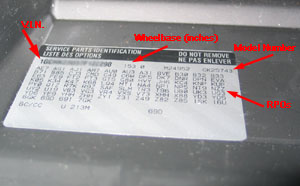
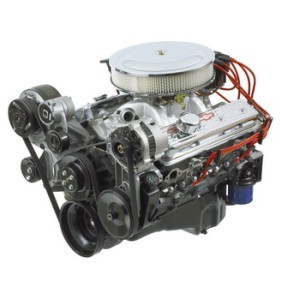
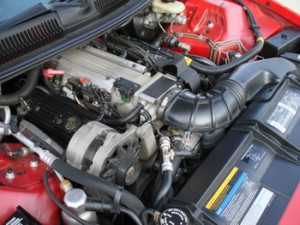
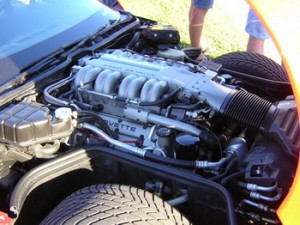
 for Chevrolet Corvette 2004_5_7L_V8_LS1_Y_resize.jpg)
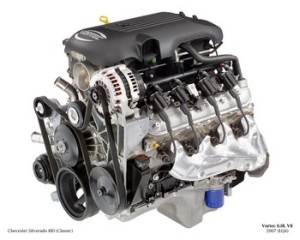
 for Chevrolet Corvette_resize.jpg)
 X09PT_8C081_resize.jpg)
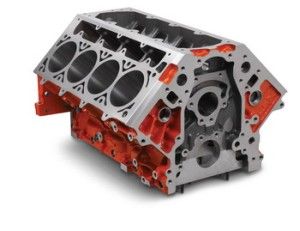
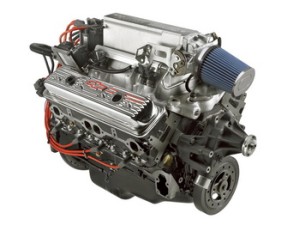
_resize.jpg)
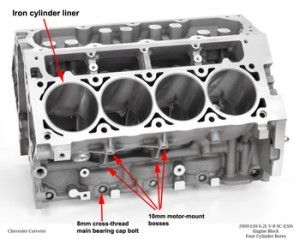
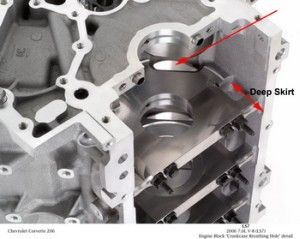
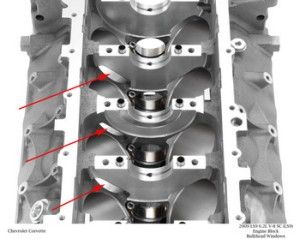
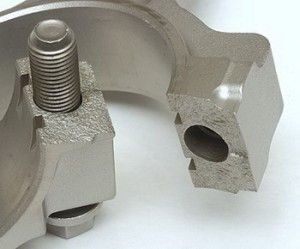
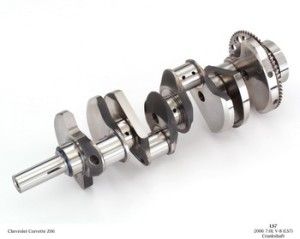

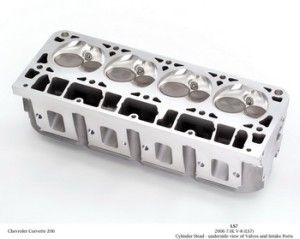
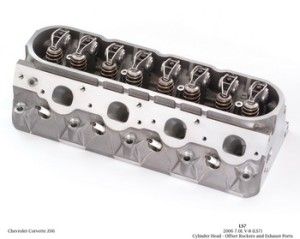
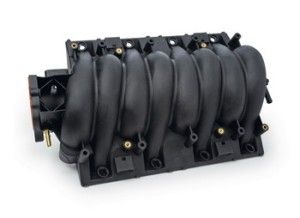
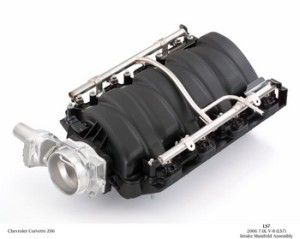
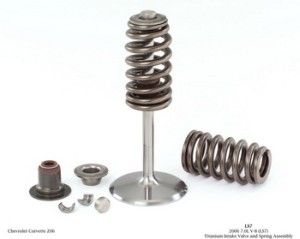
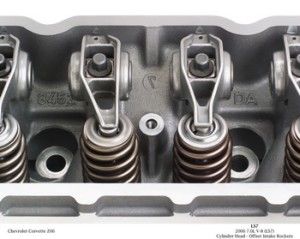
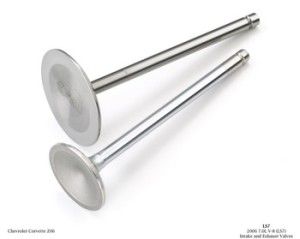
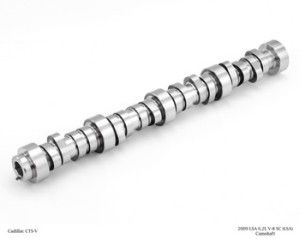

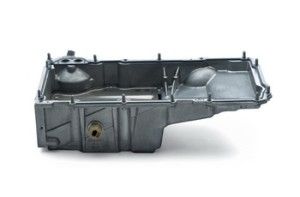
5_resize.jpg)
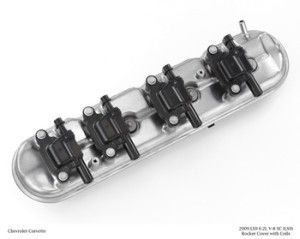
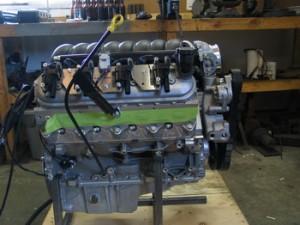
 for Pontiac GTO X04PT_8C012_resize.jpg)
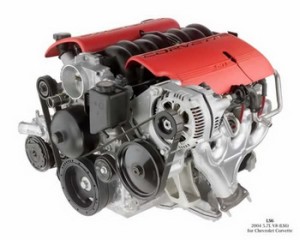
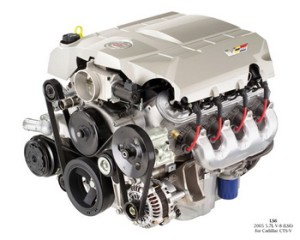
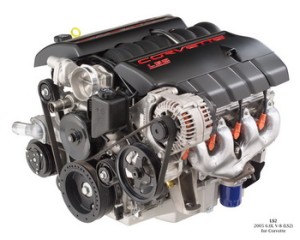
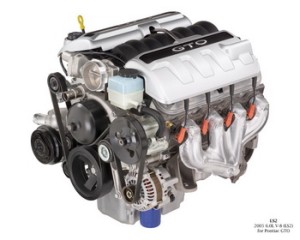
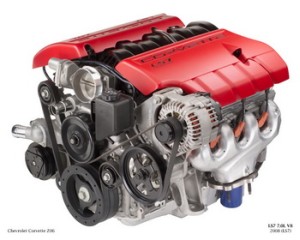
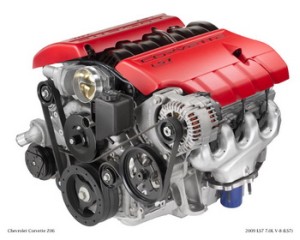
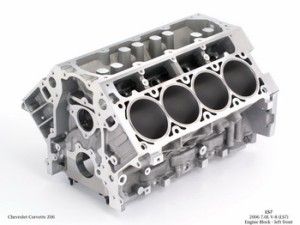
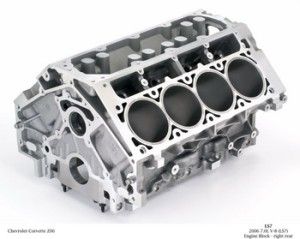
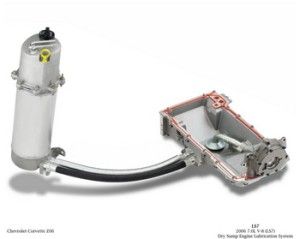
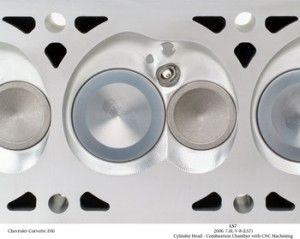
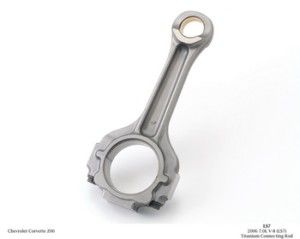
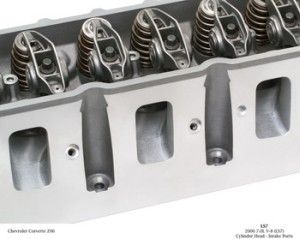
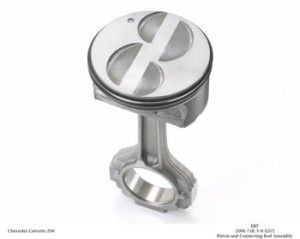
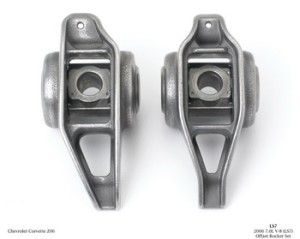
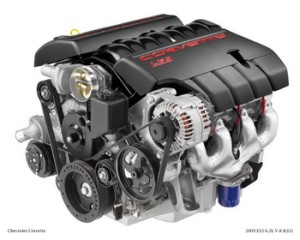
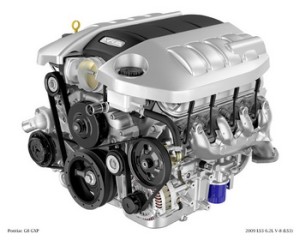

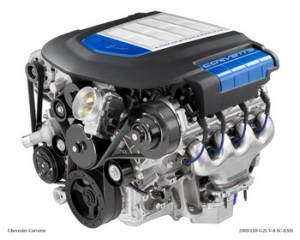
7_resize.jpg)
3_resize.jpg)
10_resize.jpg)
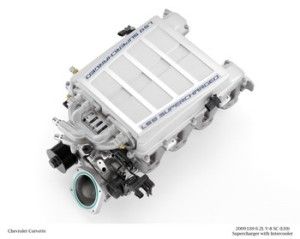

9_resize.jpg)
_resize.jpg)
11_resize.jpg)
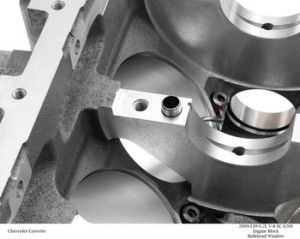
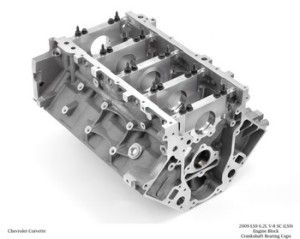
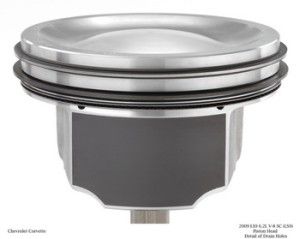
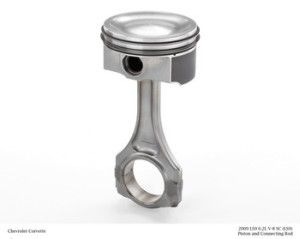
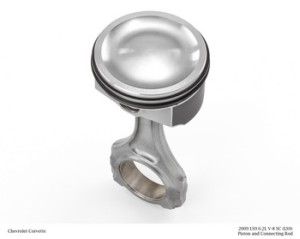
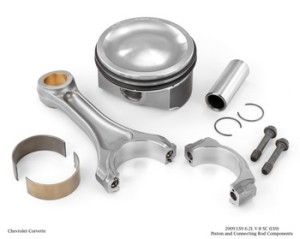
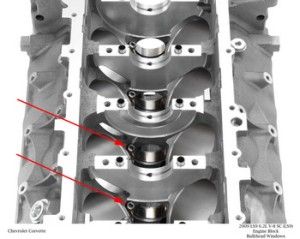
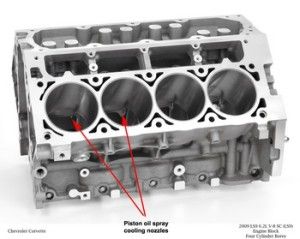
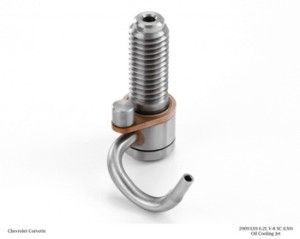
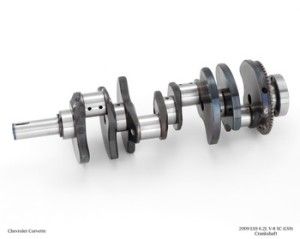
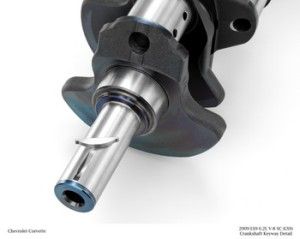
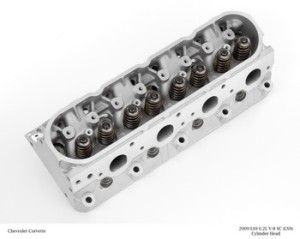
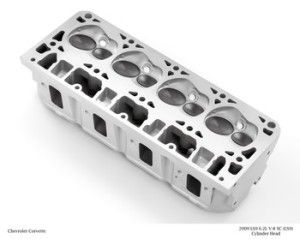
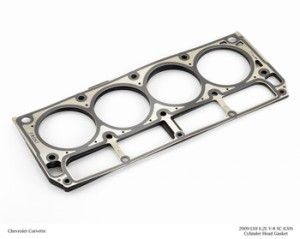
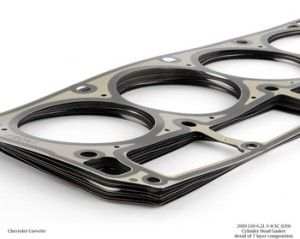
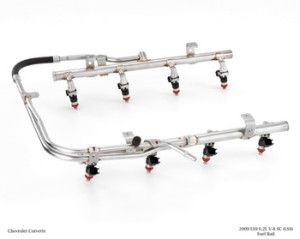
2_resize.jpg)
5_resize.jpg)
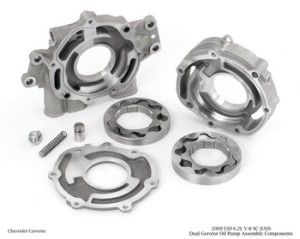
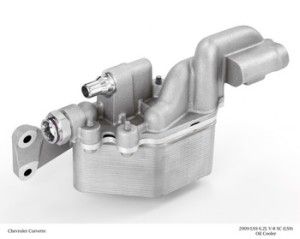
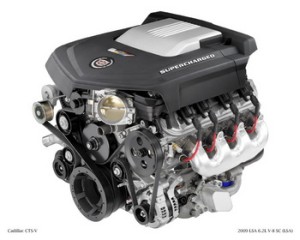
 for Cadillac CTS-V - David Kimble Illustration_resize.jpg)
4_resize.jpg)
